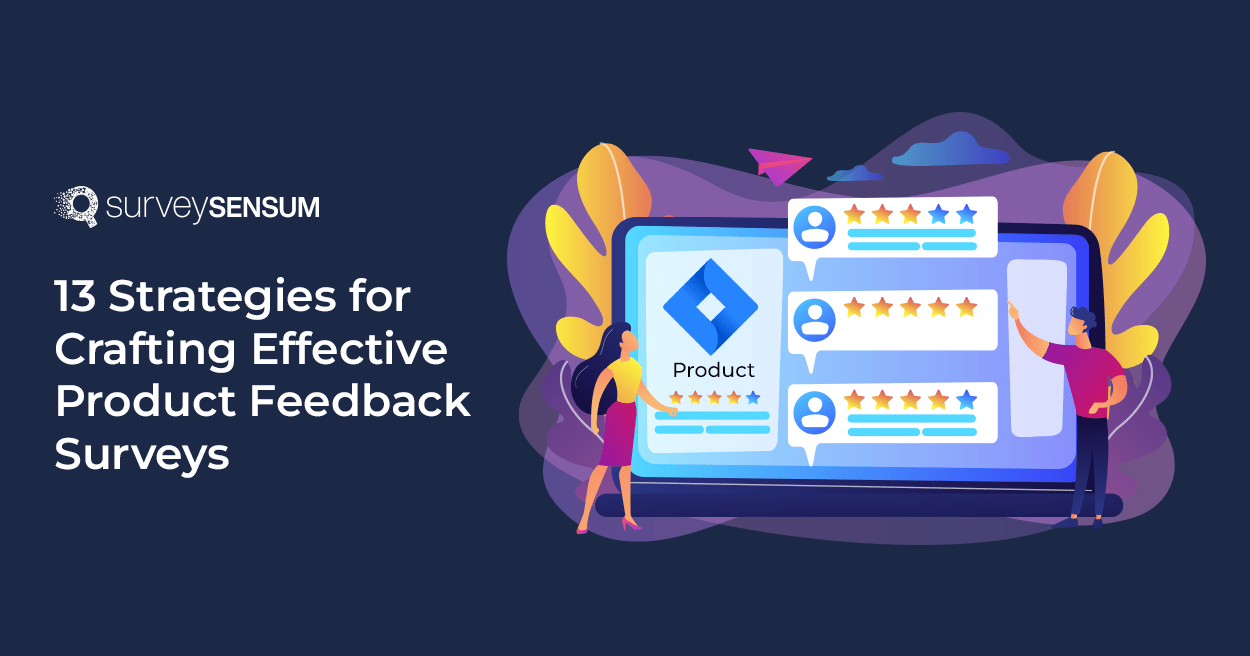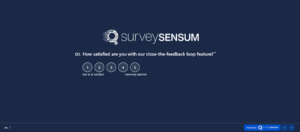5 Ways to Improve Patient Communication and Build Trust
Read More

Do you want to stay updated with your customer needs and preferences to enhance your product?
Well, product feedback surveys and product feedback tools are the way to go!
By launching these surveys you can actually understand what your customers want, their preferences, and their pain points. And improve your products as per your customer needs and expectations – giving you a competitive edge.
And yes, to make the process easy – it is always recommended to have an efficient product feedback platform.
Sounds good but, what exactly is product feedback? And how to create compelling product feedback surveys?
We’ll explore all this in this blog along with 13 strategies for creating effective product feedback surveys.
It’s a journey that benefits both companies and customers, putting the power of change in the hands of those who matter the most – the USERS.
Let’s dive straight into the definition of a product feedback survey.

Product feedback surveys are questionnaires that ask people about their experiences with a particular product. They help companies collect feedback from customers to understand what’s working well and what needs improvement.
Not just that. It also helps you
That was about product feedback surveys, let’s explore strategies for creating and using these surveys effectively.
Now, let’s dive into crafting successful product feedback surveys.
Strategy 2: Target the Right Audience
Strategy 3: Design User-Centric Surveys
Strategy 4: Ask the Right Questions from the Right User
Strategy 5: Timely and Relevant Distribution
Strategy 6: Encourage Meaningful Responses
Strategy 7: Analyze and Act on Feedback
Strategy 8: Communicate Findings and Follow-Up
Strategy 9: Continual Product Enhancement
Strategy 10: Strategic Placement of the Survey
Strategy 11: Make it Easy to Complete Your Survey
When creating a product feedback survey, it’s crucial to start by identifying your goals. Ask yourself what you want to achieve with the survey. It can be anything from
Knowing your objectives will help you tailor your survey questions to get the right insights.
Now, let’s talk about WHOM you should be sending your product feedback survey.
Not every customer will have the insights you need, so it’s important to target the right audience. To do that, you should consider reaching out to:
By reaching out to these groups, you increase your chances of getting high-quality feedback that can truly make a difference.
That’s not all. It’s important to ask the right questions and send surveys at the right time (ideally when customers have the opportunity to thoroughly explore the product or when their customer experiences are still fresh in their minds.)
This tailored approach maximizes the quality and impact of the feedback on your product’s enhancement. Lastly, when sending surveys to your email subscribers, implementing a free email verifier can ensure that your outreach is directed towards genuine and engaged recipients.
Creating user-friendly surveys is key to getting valuable feedback. Here’s how to do it:
By designing surveys this way, you’ll get more meaningful feedback from your customers.
Create Compelling Product Surveys With SurveySensum – Sign Up for Free
When it comes to your product feedback surveys, it’s essential to consider the source:
By collecting feedback from both groups, you get a more comprehensive understanding of how your product impacts both its users and the broader decision-making process. This balanced approach can lead to more effective improvements and solutions for your product.
How and when you send out your product feedback surveys can make a big difference. Here’s how to do it right:
Getting valuable feedback means encouraging your customers to share their thoughts. Here’s how you can do it:
Collecting feedback is just the beginning; its true value emerges when you analyze and take action on it. By doing so, you not only enhance your products but also ensure customer satisfaction. Here’s how to analyze the feedback and turn it into action:
Once you have analyzed the feedback and taken action, it is important to close the feedback loop by communicating your findings to your customers. This shows that you are listening to their feedback and are committed to improving your product. You can communicate your findings through a blog post, email, or social media channels.
Improving your product is an ongoing journey, and product feedback surveys play a vital role in this process. Here’s the key:
Where you put your product feedback survey matters. Here’s how to place it strategically:
Getting people to complete your survey is important. Here’s how to make it easy:
You’re bound to collect a lot of feedback, but here’s the catch:
By doing this, you make the most of your resources and address the issues that matter most to your users.
Internal obstacles can slow down your product feedback loop. So, here’s what to do:
Creating effective product feedback surveys is your secret to enhancing your product. These 13 strategies empower you to gather valuable insights, improve your products, and satisfy customers. It all starts with well-designed surveys, targeting the right audience, and personalizing outreach. Keep the surveys short, and always act on the feedback you receive.
But it doesn’t end there. Continual product enhancement, timely survey distribution, and strategic placements are key. Make it easy for users to participate, and eliminate internal bottlenecks. With these strategies, you turn customer feedback into actionable insights, nurturing a cycle of improvement.
So, why wait? Try SurveySensum as it is an effective product feedback management tool that not only lets you launch surveys but also helps you distribute them on multiple platforms and analyze them in real-time. There are many more benefits that it offers.
